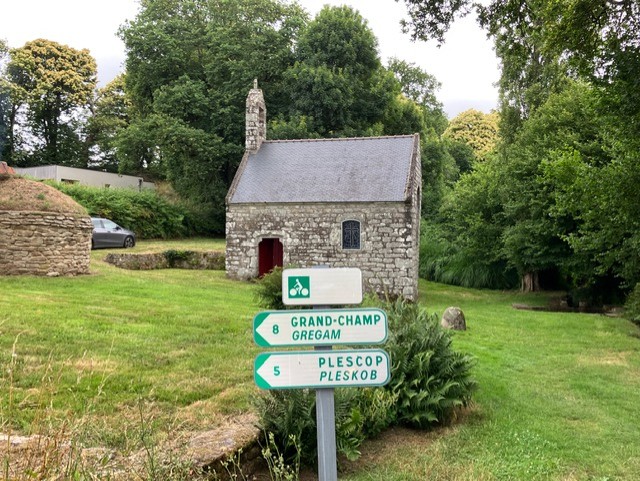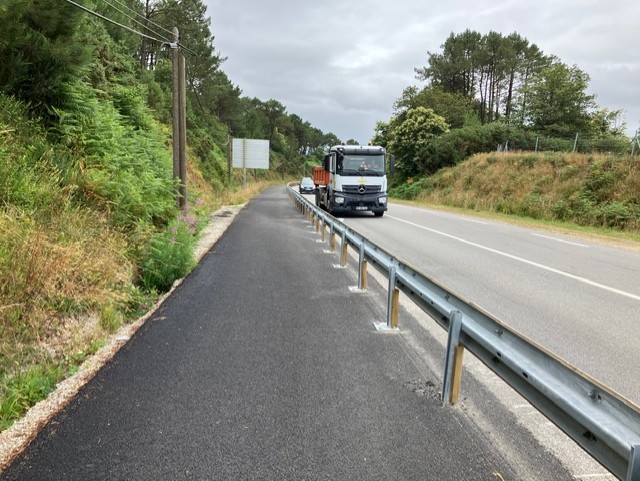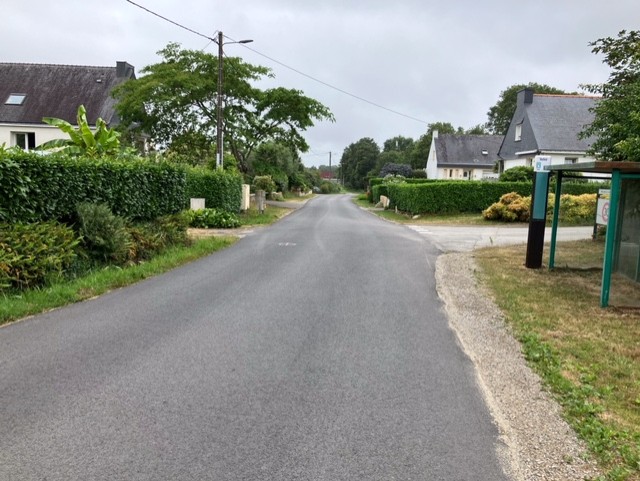Caroline and I have been lucky enough to enjoy a recent trip to
Brittany where I was generally impressed by the standard of new
cycling infrastructure. It struck me that there are lessons to be
learnt for whenever the Boniface Trail reaches detailed design
stage.
We stayed at a small town by the name of Grand-Champ, about ten
miles from the regional centre of Vannes, linked to it via a not
very cyclist friendly main road: sounds familiar?
A new cycleway has been constructed using a combination of quiet
lanes and purpose built cycle path alongside the main road: sounds
familiar?
This felt like a very good provision for the following
reasons:
The route has very clear signposting, telling users not only
that this is a cycle route (they probably know that), but where it
goes to, and distances.

Excellent, clear signs. No chance of getting
lost!
Wherever space allows, there is a verge, plus a crash barrier to
separate cyclists from traffic.

This felt safe, despite the proximity of fast-moving
traffic
Where there is no room for a verge, the crash barrier is
extra-high, which imparts a sense of safety even with traffic close
at hand.

This felt safe too, despite being cheek-by-jowl to
heavy traffic
The quiet lanes which are used have excellent surfaces, are
plenty wide enough for cars and bikes to pass each other, and have
excellent sight lines. They are also genuinely quiet.

An actual safe to use, quiet lane, with a
surface of dreams for cyclists
There were incomplete sections when we reached Vannes, but where
there were cycle lanes, these had very clearly marked priority at
road junctions and roundabouts, which drivers were exemplary in
observing.
All points which I think are worth bearing in mind as and when
we have further discussions with the Highways people about the
Boniface Trail.
I told you it was nerdy!
John Craythorne